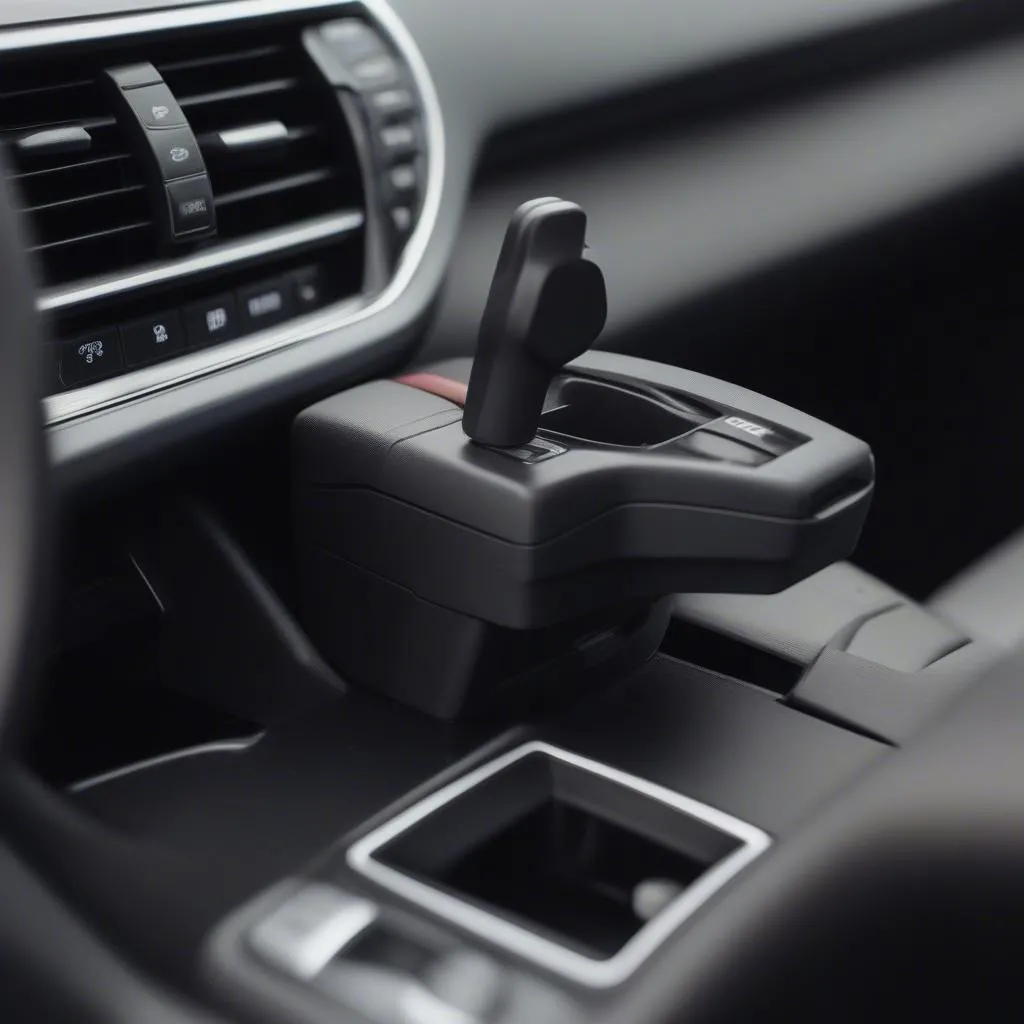Ever felt like you were on a scavenger hunt when trying to locate your car’s OBD2 port? You’re not alone! This little port, a gateway to your car’s inner workings, can be surprisingly elusive. Whether you’re a seasoned mechanic or a car enthusiast looking to delve into DIY diagnostics, knowing where to find your OBD2 port is crucial.
Decoding the Mystery of the OBD2 Port
What Makes This Port So Important?
Imagine being able to have a conversation with your car, understanding its aches and pains. That’s precisely what the OBD2 port allows! This standardized port, mandatory in most vehicles manufactured after 1996, acts as a communication hub between your car’s computer and diagnostic tools.
From a mechanic’s perspective, “The OBD2 port is an invaluable tool,” says Michael Schmidt, a seasoned mechanic with over 20 years of experience at a Ford dealership in Chicago. “It allows us to quickly identify issues, read error codes, and analyze engine performance data, saving both time and money for the customer.”
Technically speaking, the OBD2 port uses a standardized 16-pin connector and a universal communication protocol, making it compatible with a wide range of diagnostic scanners. This means whether you drive a sleek German sedan or a rugged American truck, the connection remains the same.
Economically, the OBD2 port empowers car owners by providing access to valuable information about their vehicles. This transparency can be especially helpful when dealing with repairs, ensuring you understand the problem and avoiding unnecessary costs.
Where Can You Usually Find This Elusive Port?
While the OBD2 port’s location can vary slightly depending on the make and model of your vehicle, it’s typically located within a few feet of the steering wheel, often under the dashboard.
- Under the Driver’s Side Dash: This is the most common location. Look for a trapezoidal-shaped connector with 16 pins.
- Behind the Ashtray or Coin Tray: Some manufacturers cleverly hide the port behind removable panels near the center console.
- Inside the Center Console: In some vehicles, the OBD2 port might be located inside the center console compartment, either under the armrest or on the sidewalls.
Pro Tip: If you’re having trouble finding your OBD2 port, consult your vehicle’s owner’s manual. It usually provides a diagram or specific instructions on its location.
Navigating the Maze: Common OBD2 Port Locations
Let’s dive into some specific examples to illustrate the diverse locations of this crucial port:
- 2018 Toyota Camry: The OBD2 port is typically located under the driver’s side dash, near the hood release lever.
- 2020 Ford F-150: You’ll likely find the port under the dashboard, to the left of the steering column.
- 2019 BMW 3 Series: BMW often places the OBD2 port behind a small removable panel in the driver’s footwell, near the center console.
Remember, these are just a few examples, and the exact location may vary. If you’re unsure, always refer to your owner’s manual or a reliable online resource for your specific vehicle.
 obd2-port-toyota-camry
obd2-port-toyota-camry
Troubleshooting OBD2 Port Issues
Sometimes, you might encounter issues connecting to your OBD2 port. Here are some common problems and solutions:
- Loose Connection: Ensure the connector is firmly seated in the port.
- Blown Fuse: Check the fuse box for any blown fuses related to the OBD2 port or cigarette lighter.
- Faulty Scanner: Try a different scanner to rule out any issues with your diagnostic tool.
If you’re still facing difficulties, it’s best to consult a qualified mechanic for assistance. They have the expertise and specialized tools to diagnose and resolve any complex OBD2 port-related issues.
Exploring Further: Related Questions and Resources
Here are some other common questions people ask about OBD2 ports:
- What can I do with an OBD2 scanner? (link to https://techcarusa.com/automatic-obd-ignition-on-not-reported/ with text: “OBD2 scanner uses”)
- Are all OBD2 scanners the same?
- Can I leave an OBD2 scanner plugged in all the time?
For further insights into OBD2 codes and diagnostics, check out our article on “Understanding Honda OBD Code P1077” (link to: https://techcarusa.com/honda-obd-code-p1077/ with text: “Understanding Honda OBD Code P1077”).
Need Help? We’re Just a Message Away!
Feeling overwhelmed by the world of car diagnostics? Don’t worry! Our team of expert mechanics is here to help. Contact us via WhatsApp at +84767531508 for assistance with diagnostic tools, troubleshooting, and any car-related questions you may have. We’re available 24/7 to guide you through the process.
Remember, understanding your car’s OBD2 port is like having a secret weapon in your arsenal. It empowers you with knowledge, control, and peace of mind when it comes to your vehicle’s health.